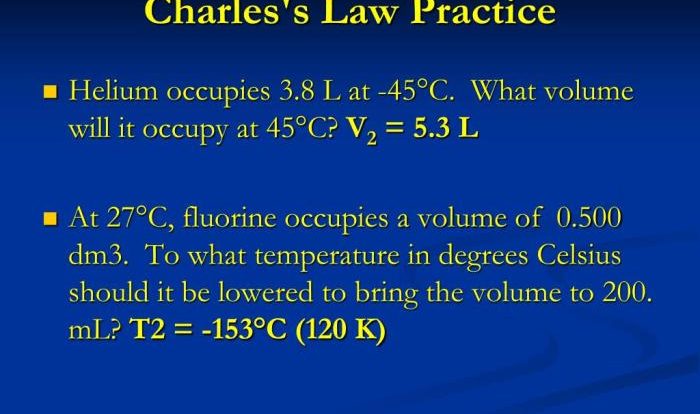The Solution of Atkins Physical Chemistry embarks on a journey through the intricacies of chemical interactions, delving into the fundamental principles that govern the behavior of substances in solutions. This comprehensive guide unravels the complexities of chemical potential, kinetics, electrochemistry, spectroscopy, and the practical applications of solution chemistry in various scientific disciplines.
At the heart of solution thermodynamics lies the concept of chemical potential, a driving force that dictates the direction of spontaneous processes. Kinetic processes, on the other hand, shed light on the rates of reactions in solutions, revealing the influence of temperature, concentration, and solvent effects.
Electrochemistry explores the interplay between electrical and chemical phenomena, providing insights into the behavior of ions in solutions and their applications in batteries and corrosion control.
1. Solution Thermodynamics: Solution Of Atkins Physical Chemistry

Solution thermodynamics is the study of the thermodynamic properties of solutions, which are mixtures of two or more substances. The chemical potential of a substance in a solution is a measure of its tendency to escape from the solution. The chemical potential of a substance is affected by its concentration, temperature, and the nature of the solvent.
1.1. Chemical Potential and Spontaneous Processes
- The chemical potential of a substance can be used to predict the direction of spontaneous processes.
- A substance will tend to move from a region of high chemical potential to a region of low chemical potential.
- For example, a solute will tend to dissolve in a solvent until its chemical potential in the solution is equal to its chemical potential in the pure solvent.
1.2. Relationship between Chemical Potential and Other Thermodynamic Properties
- The chemical potential of a substance is related to its other thermodynamic properties, such as entropy and enthalpy.
- The Gibbs free energy of a solution is a measure of the spontaneity of a process that occurs in the solution.
- The Gibbs free energy of a solution is equal to the sum of the chemical potentials of the components of the solution.
2. Solution Kinetics
Solution kinetics is the study of the rates of chemical reactions in solution. The rate of a reaction in solution is determined by the concentrations of the reactants, the temperature, and the nature of the solvent.
2.1. Types of Kinetic Processes
- There are two main types of kinetic processes that can occur in solutions: homogeneous and heterogeneous reactions.
- Homogeneous reactions occur in a single phase, while heterogeneous reactions occur at the interface between two phases.
- For example, the reaction between two ions in solution is a homogeneous reaction, while the reaction between a solid and a liquid is a heterogeneous reaction.
2.2. Rate Laws
- The rate of a reaction in solution can be expressed by a rate law.
- A rate law is an equation that expresses the rate of a reaction as a function of the concentrations of the reactants.
- The rate law for a reaction can be determined by experiment.
2.3. Factors Affecting Reaction Rates
- The rate of a reaction in solution is affected by a number of factors, including the temperature, the concentrations of the reactants, and the nature of the solvent.
- The temperature dependence of a reaction rate can be described by the Arrhenius equation.
- The concentration dependence of a reaction rate can be described by the order of the reaction.
3. Electrochemistry of Solutions

Electrochemistry is the study of the relationship between electrical energy and chemical change. Electrochemistry of solutions is the study of the electrochemical properties of solutions.
3.1. Basic Principles of Electrochemistry
- The basic principles of electrochemistry are based on the concept of redox reactions.
- A redox reaction is a reaction in which one substance is oxidized and another substance is reduced.
- Oxidation is the loss of electrons, while reduction is the gain of electrons.
3.2. Electrochemical Cells
- Electrochemical cells are devices that use redox reactions to generate electricity.
- There are two types of electrochemical cells: galvanic cells and electrolytic cells.
- Galvanic cells generate electricity from a spontaneous redox reaction, while electrolytic cells use electricity to drive a non-spontaneous redox reaction.
3.3. Applications of Electrochemistry
- Electrochemistry has a wide range of applications, including batteries, fuel cells, and corrosion.
- Batteries are devices that store electrical energy in the form of chemical energy.
- Fuel cells are devices that generate electricity from the reaction of a fuel with oxygen.
- Corrosion is the process of metal degradation due to electrochemical reactions.
4. Spectroscopy of Solutions
Spectroscopy is the study of the interaction of electromagnetic radiation with matter. Spectroscopy of solutions is the study of the spectroscopic properties of solutions.
4.1. Types of Spectroscopy
- There are many different types of spectroscopy, including UV-Vis spectroscopy, IR spectroscopy, and NMR spectroscopy.
- UV-Vis spectroscopy measures the absorption of ultraviolet and visible light by a solution.
- IR spectroscopy measures the absorption of infrared light by a solution.
- NMR spectroscopy measures the absorption of radio waves by a solution.
4.2. Applications of Spectroscopy
- Spectroscopy has a wide range of applications, including the identification and characterization of compounds, the study of reaction mechanisms, and the determination of molecular structure.
- For example, UV-Vis spectroscopy can be used to identify the presence of certain functional groups in a molecule.
- IR spectroscopy can be used to study the structure of a molecule.
- NMR spectroscopy can be used to determine the connectivity of atoms in a molecule.
5. Applications of Solution Chemistry
Solution chemistry is used in a wide variety of applications, including the development of new materials, the purification of water, and the treatment of diseases.
5.1. Everyday Applications
- Solution chemistry is used in a variety of everyday applications, such as the preparation of food, the cleaning of clothes, and the maintenance of swimming pools.
- For example, the baking of bread involves the formation of a solution of flour and water, which is then heated to cause the starch in the flour to gelatinize.
- The cleaning of clothes involves the use of a solution of detergent and water, which helps to remove dirt and stains from the fabric.
5.2. Medical Applications, Solution of atkins physical chemistry
- Solution chemistry is used in a variety of medical applications, such as the delivery of drugs, the diagnosis of diseases, and the treatment of wounds.
- For example, intravenous fluids are solutions of electrolytes and other nutrients that are used to hydrate patients and to deliver drugs directly into the bloodstream.
- Blood tests are used to diagnose diseases by measuring the concentrations of various substances in the blood.
5.3. Environmental Applications
- Solution chemistry is used in a variety of environmental applications, such as the purification of water, the treatment of wastewater, and the remediation of contaminated soil.
- For example, water purification plants use a variety of chemical processes to remove impurities from water, such as filtration, coagulation, and disinfection.
- Wastewater treatment plants use a variety of biological and chemical processes to remove pollutants from wastewater, such as activated sludge treatment and anaerobic digestion.
Essential Questionnaire
What is the significance of chemical potential in solution thermodynamics?
Chemical potential serves as a measure of the tendency of a substance to undergo spontaneous change. It plays a crucial role in predicting the direction of chemical reactions and phase transitions.
How does solution kinetics contribute to understanding reaction mechanisms?
Solution kinetics provides valuable insights into the rates and mechanisms of reactions in solutions. By analyzing kinetic data, scientists can determine the rate law and identify the factors that influence the reaction rate.
What are the practical applications of electrochemistry in everyday life?
Electrochemistry finds applications in diverse areas, including batteries, fuel cells, corrosion control, and electroplating. It enables the conversion of chemical energy into electrical energy and vice versa.
